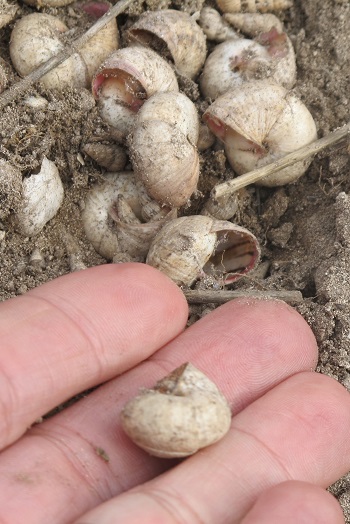Sep 1 2014
One hundred years after they arrived in a sack of grain, white Italian snails are the target of beleaguered South Australian farmers who have joined forces with University of Sydney robotics experts to eradicate the gastropods.

Now numbered in their billions, the white Italian snail is causing immeasurable damage to broadacre crops across Australia’s southern states forcing farmers off their land.
Dr Robert Fitch, Senior Research Fellow at the University’s Australian Centre for Field Robotics is working with farmers and agronomists in the region on new methods for reversing the plague of slimy molluscs.
To date, traditional methods of burning or poisoning the snails have failed to halt their advance and robotics is set to “transform the way food is grown, produced and delivered”.
“We are investigating ways of using robots such as the newly built Ladybird, to count or locate where and when the snails are likely to be on the move,” Dr Fitch says.
“Once farmers know more about the behaviour patterns of the snails they can apply the most appropriate methods to ridding their property of the pests.
“The farm of the future will likely involve a ‘system of systems’ where teams of relatively small robots and sensors work together to collect information and perform mechanical tasks.”
Sarah Noack, a research and extension manager for the Hart Field-Site Group in SA, agrees snails cause significant problems to farmers and says the prospect of new ways of tracking and controlling them is an exciting development for the industry.
“Snails cause damage to emerging crops, can clog machinery at harvest and contaminate grain resulting in delays and frustration,” she says.
“Controlling snail populations is vital if grain contamination and crop damage are to be prevented. This means monitoring and managing snails regularly throughout the year.
“We know that they eat green plant material and dead organic material and can cause significant damage to emerging crops pastures. In the summer they also cling to the stems of plants keeping cool off the ground.”
Field research estimates that each snail lays 400 eggs per year and if the environmental conditions are conducive, hundreds more.